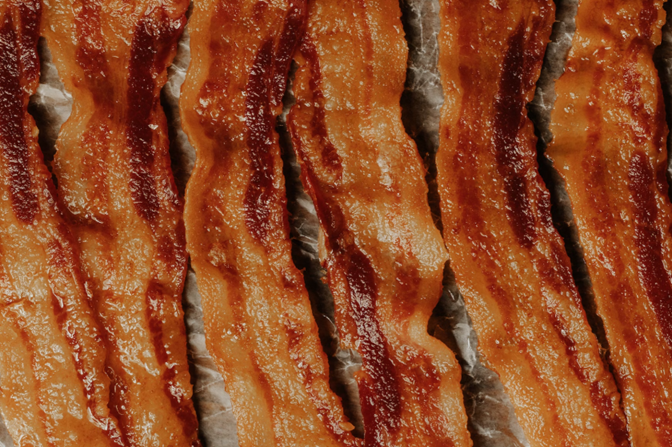This week, the Federal Circuit reversed the United States District Court for the District of Delaware’s (“District Court”) decision to add David Howard as a joint inventor on Hormel Food Corporation’s (“Hormel”) U.S. Patent No. 9,980,498 (“the ’498 patent”). Despite the District Court finding the opposite, the Federal Circuit found that Howard’s contributions to the ’498 patent were “insignificant in quality” under the Pannu factors.
The ’498 patent is directed to methods of cooking precooked bacon and other meat products. Specifically, the ’498 patent claimed a two-step method of cooking bacon: (1) a preheating step using a lower temperature “microwave, infrared oven, and hot air” method, and (2) a second, higher-temperature cooking step. The first step creates a layer of melted fat around the meat which protects the meat from condensation that would wash away flavor or texture in the second step. In 2007, Howard and Hormel entered into a joint agreement to develop an oven for a two-step cooking process in an effort to improve “color development” when cooking pork. During the testing, Hormel began to use, among other sources, an infrared oven as one of the heating sources for the preheating step. Howard claimed that he was the one who disclosed the infrared preheating concept. In May 2018, the ’498 patent issued, but did not list Howard as an inventor.
In April 2021, HIP, whose predecessor was Howard’s employer at the alleged time of the invention, sued Hormel, arguing that Howard was a sole or joint inventor of the ’498 patent. The District Court found that because Howard contributed the “infrared preheating” portion of the patent claims, which stood out from the remainder of the independent claims that did not include an infrared preheating element, Howard was at least a joint inventor. The Federal Circuit disagreed. Citing to the second Pannu factor, which provides “an inventor ‘must make a contribution to the claimed invention that is not insignificant in quality, when that contribution is measured against the dimension of the full invention,’” the Federal Circuit found that the invention was really about the two-step method for cooking bacon, reasoning that (1) there were any number of heat sources (like a microwave) to carry out the preheating step, and (2) the infrared oven was mentioned only once in the patent specification, indicative of its insignificance to the invention. The Federal Circuit added further fuel to the fire by emphasizing that the microwave oven was “central[]” to the claims, figures, and specification.
Parties looking to be listed as joint inventors on patents should take care to ensure that their contributions, to the extent that they are significant, are present across the specification, figures, and claims of the patent. Should inventorship disputes arise, courts will look to the evidence present in the entirety of the patent for inventorship determinations.

